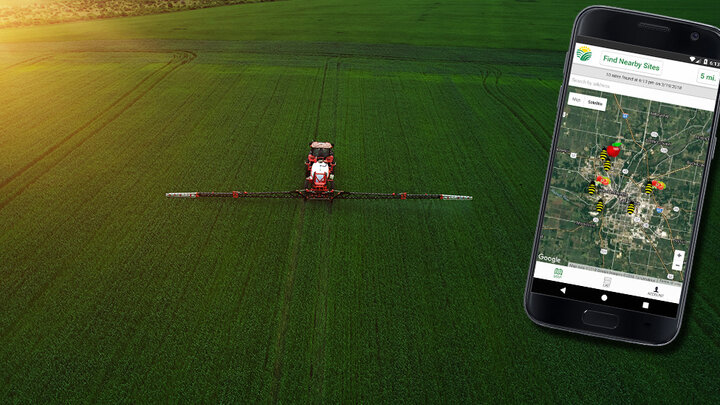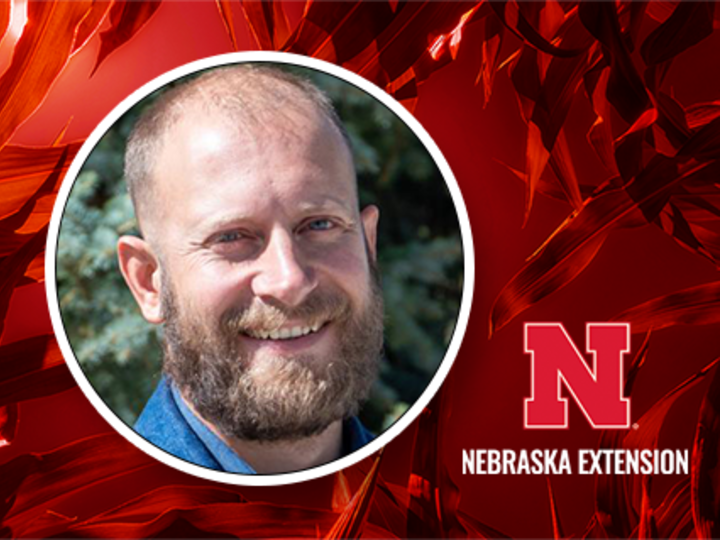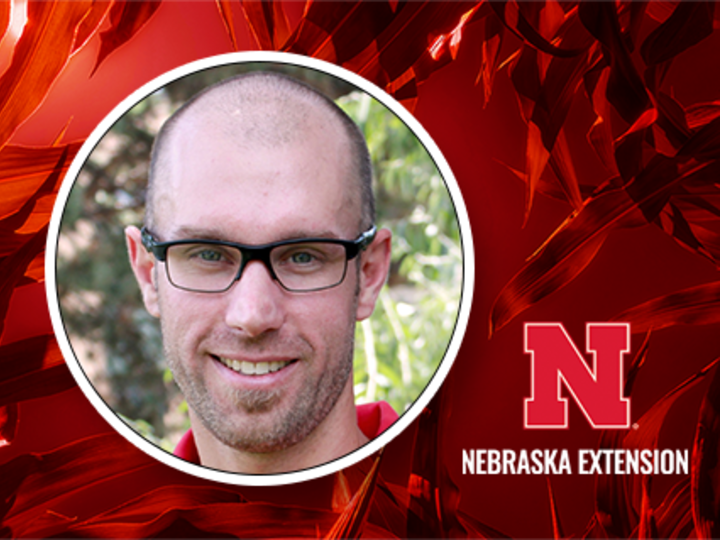Weed Management in Nebraska Crop Production
The following sections feature key information and resources on weed control for ag producers.


Guide for Weed, Disease, and Insect Management in Nebraska
Written by UNL Extension specialists, the Guide for Weed, Disease and Insect Management in Nebraska (EC130) is a comprehensive resource for unbiased, research-based information and recommendations on weed management in Nebraska crop production, with special sections on fungicides, insecticides and pesticide application equipment and safety. It also features detailed drawings and photos to aid in weed, insect and disease identification.
The guide is updated annually and available to order in print or PDF format.

FieldWatch — Sensitive Crop Locator
FieldWatch offers a platform of mapping tools that identify locations in Nebraska where sensitive crops, such as grapes and organics, are grown. After sensitive sites are identified, a pesticide applicator can take appropriate action to avoid injuring the crop due to herbicide drift, etc. FieldWatch is free to use and continually expands its services to meet the needs of crop producers, apiarists and pesticide applicators.
Publications on General Topics in Weed Science
Use of Herbicide Tolerant Crops as a Component of an Integrated Weed Management Program (NebGuide G1484, *PDF version, 290 KB; 4 pages). This NebGuide provides general guidelines for using herbicide tolerant crops in an integrated weed management program to ensure the long-term viability and profitability of this technology while protecting natural resources.
A Quick Test for Herbicide Carryover in the Soil (NebGuide G1891, *PDF version, 745 KB; 3 pages). How can you tell if you have herbicide carryover in your fields? Plants grown in soil samples can tell.
Weed Targeting Herbicide Management: Precision Agriculture (EC708, PDF, 358KB; 6 pages). Site-specific weed management and herbicide application is an effective way to minimize herbicide costs, maximize weed control and prevent unnecessary environmental waste. This publication, part of the precision agriculture series, explains basic principles of site-specific weed control.
Weed Management in Rainfed Cropping Systems (NebGuide G1577; *PDF 757KB, 4 pages)
Weed management recommendations for the four phases of a three-year summer-fallow cropping system.
UNL Extension Publications on Herbicide Spray Application Topics
Herbicides are a major tool for weed management. The following publications provide information on the proper setup, calibration, and cleanup of agricultural sprayers. There is also information on spray drift and spraying patterns to avoid overlap.
How to Spray a Field to Prevent Overlap and Reduce Drift Injury (NebGuide G1570, PDF, 359 KB; 4 pages)
Proper spraying techniques for various situations are outlined and illustrated.
Fine-Tuning a Sprayer with the "Ounce" Calibration Method (NebGuide G1756, PDF, 848 KB; 4 pages)
This NebGuide discusses guidelines to quickly evaluate the performance of a sprayer. Sprayer calibration, nozzle discharge and speed checks are evaluated with minimal calculations.
Calibrating of Sprayers (Also Seeders) (NebGuide G2044, PDF, 651 KB; 4 pages)
Provides methods and calculations for calibrating sprayers and seeders for accurate in-field application plus a section on converting weights and measures.
Cleaning Pesticide Application Equipment (NebGuide G1770, PDF, 646 KB; 3 pages)
How to safely clean sprayers, nozzles and other equipment thoroughly after spraying pesticides is covered in this NebGuide.
Spray Drift of Pesticides (NebGuide G1773, PDF, 710 KB; 4 pages)
Conditions that cause particle drift, and best practices of spraying are discussed in this NebGuide.
Pesticide Safety
Managing the Risk of Pesticide Poisoning and Understanding the Signs and Symptoms (EC2505)
Accidental exposure or overexposure to pesticides can have serious health implications. Being able to recognize common pesticide poisonings and knowing what to do when pesticide poisoning occurs can prevent serious consequenses.
Safe Transport, Storage and Disposal of Pesticides (EC2507)
Most accidental pesticide poisonings occur when pesticides are mishandled. Find out how to safely store and handle pesticides, and learn the best ways to dispose of both product and containers.
Understanding the Pesticide Label (G1955)
This NebGuide describes the parts of a pesticide label, to aid in understanding and promote safe and effective use of pesticide products.
Pesticide Laws and Regulations (G479)
General information on federal and state laws and regulations regarding pesticide use in Nebraska.
Rinsing Pesticide Containers (G1736)
Proper rinsing of pesticide containers is important in protecting the environment, saving money and meeting federal and state regulations.
Protective Clothing and Equipment for Pesticide Applicators (G758)
Wearing protective clothing and equipment (PPE) when handling pesticides reduces the risk of exposure and pesticide poisoning.
Worker Protection Standard for Agricultural Pesticides (G1219)
The Worker Protection Standard (WPS) protects agricultural employees from exposure to agricultural pesticides. Find out whether as an employer you are covered or exempt from the WPS and learn how to comply with it.

Contact:
Nevin Lawrence
Integrated Weed Management Specialist
(308) 632-1230
nlawrence2@unl.edu
Faculty Bio

Contact:
Chris Proctor
Weed Management Extension Educator
(402) 472-5411
caproctor@unl.edu
Faculty Bio

Contact:
Stevan Knezevic
Integrated Weed Management Specialist
(402) 584-3808
sknezevic2@unl.edu
Faculty Bio


Weed Management in Corn
Extension Publications
Management of Herbicide-resistance Corn Volunteers in Corn and Soybean (EC3065)
Recommendations for management of corn volunteers in corn or soybean grown in rotation.

Weed Management in Soybean
Extension Publications
Ecofarming: Spring Row Crop Planting and Weed Control in Winter Wheat Stubble (NebGuide G551, *PDF version, 696 KB; 3 pages)
Weed control, stubble management and planters for planting in winter wheat stubble are covered.
Ridge Plant Systems: Weed Control (NebGuide G1762, *PDF version, 612 KB; 4 pages)
Advantages and disadvantages of the ridge plant system, weed control before and at planting, and economics of the system are discussed in this NebGuide.

Weed Management in Sorghum
Effective Weed Control in Milo: Pre-Plant Strategies and Post-Emergence Challenges
By Paul Hay, former extension educator
The keys to weed control in milo are early pre-plant (EPP) and days before planting (DBP) listed in the University of Nebraska-Lincoln Extension Guide for Weed Management. There are few options for postemergence grass control until Clearfield hybrids become available. A solid before-planting program is the best.
What about a burndown with glyphosate at planting or a pre-emerge treatment?
It can work, but there is a dangerous gap. Grass killers for sorghum are shoot absorbed. If there is no rain to activate the herbicide, escapes can occur where there is a bit of moisture in the soil to germinate grasses which come through the non-active barrier. When the herbicide is in place for the later-planted crop, it saves moisture and gives the producer added options for both grass and broadleaf control.
Spraying the last part of the herbicide behind the planter and/or using glyphosate behind the planter extends the weed control program and ensures a clean field at planting without using tillage to dry the soil and plant more weed seed. There are limited options for post-grass control, so scout heavy early and respond aggressively to escapes while they are small.
Extension Publications
Weed Management in Rainfed Cropping Systems (NebGuide G1577 PDF, 757 KB; 4 pages)
Weed management recommendations for the four phases of a three-year summer-fallow cropping system.
Ecofarming: Spring Row Crop Planting and Weed Control in Winter Wheat Stubble (NebGuide G551, PDF, 696 KB; 3 pages)
Weed control, stubble management and planters for planting in winter wheat stubble are covered.
Ridge Plant Systems: Weed Control (NebGuide G1762, PDF, 616 KB; 4 pages)
Advantages and disadvantages of the ridge plant system, weed control before and at planting, and economics of the system are discussed in this NebGuide.

Weed Management in Wheat
Extension Publications
Guide for Weed, Disease, and Insect Management in Nebraska (NebGuide EC130)
Herbicide effectiveness tables for winter wheat and other commodity crops.
Annual Broadleaf Weed Control in Winter Wheat (NebGuide G1241)
This publication describes preventative, cultural and chemical weed control in winter wheat. The best weed control is obtained by using a combinatin of these methods.
Controlling Jointed Goatgrass (NebGuide G1252)
This NebGuide covers identification and cultural and chemical control of jointed goatgrass in winter wheat.
Downy Brome Control (NebGuide G422)
This NebGuide describes downy brome and its control, including cultural, mechanical and chemical methods; herbicide recommendations are also provided.
Rye Control in Winter Wheat (NebGuide 1483)
Feral rye also known as volunteer rye, is a winter annual grass weed that reduces wheat yield, grain quality and grade. Control methods are discussed in this NebGuide.
Weed Management in Rainfed Cropping Systems (NebGuide G1577)
Weed management recommendations for the four phases of a three-year summer-fallow cropping system.
Ecofarming: Spring Row Crop Planting and Weed Control in Winter Wheat Stubble (NebGuide G551)
Weed control, stubble management and planters for planting in winter wheat stubble are covered.